Montenegro << `mahn` tuh NEH groh >> is a country in southeastern Europe, bordering the Adriatic Sea. Podgorica is Montenegro’s capital and largest city.
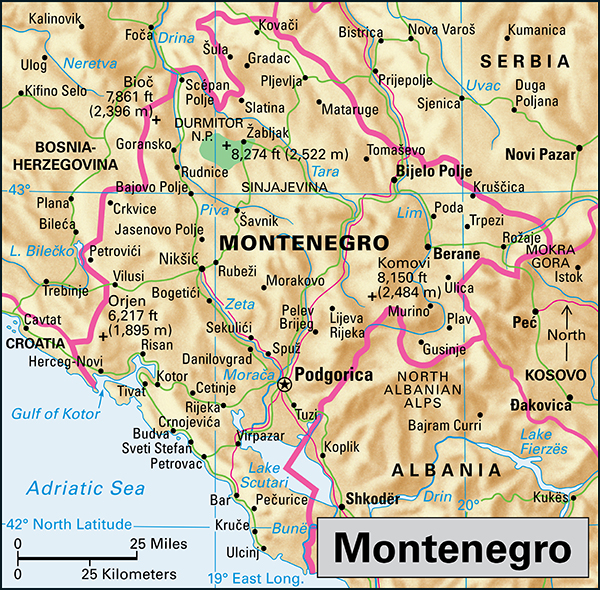
In 1918, Montenegro became part of the Kingdom of the Serbs, Croats, and Slovenes, later renamed Yugoslavia. In 1946, Yugoslavia was organized as a federal state consisting of six republics, one of which was Montenegro. Between June 1991 and March 1992, four of the republics—Bosnia-Herzegovina, Croatia, Macedonia, and Slovenia—declared their independence. In April 1992, Montenegro joined Serbia in forming a new, smaller Yugoslavia. In 2003, Yugoslavia adopted a new constitution and changed its name to Serbia and Montenegro. In 2006, Montenegro separated from Serbia and became an independent country.
Government.
A president acts as Montenegro’s chief of state. An elected Assembly, led by a prime minister, makes the republic’s laws. The prime minister is the head of government and usually the leader of the party that controls the assembly. Voters elect the president to a five-year term and the assembly members to four-year terms. The Democratic Party of Socialists of Montenegro has been the country’s chief political party since independence.

People.
Most of the people are Montenegrins. The official language of the country is Montenegrin. Minority groups in Montenegro include Albanians, Muslim Slavs, and Serbs. Children in Montenegro are required to attend school from the ages of 7 to 15. Montenegro has a university in Podgorica.
Land and climate.
Mountains cover most of Montenegro, and thick forests grow over much of the republic. A narrow strip of land lies along the Adriatic Sea. Most of Montenegro has cold, snowy winters. Summers are warm in the valleys but cool in the mountains. The coast has a mild climate. 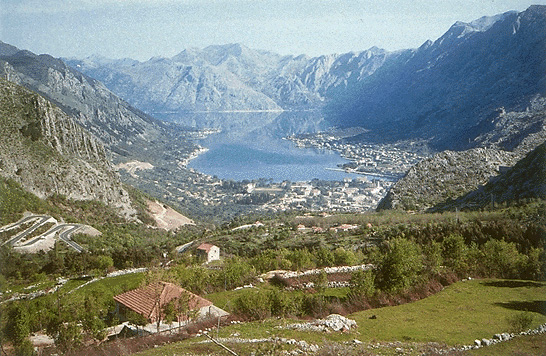
Economy.
When Montenegro was part of the larger Yugoslavia, it had one of the weakest economies of the six republics. Today, even though Montenegro has gradually moved toward a free market economy, it is still one of the poorer countries in Europe.
Montenegro mines coal and other minerals. Factories manufacture aluminum, food products, and iron and steel. Important crops include cabbages, cherries, figs, grapes, olives, plums, potatoes, tomatoes, and watermelons. Farmers also raise dairy cattle, chickens, hogs, and sheep.
Montenegro imports more than it exports. The country imports food, machinery, and petroleum products. Important exports include aluminum, electrical energy, food, and iron and steel. Its chief trading partners include Bosnia-Herzegovina, Italy, and Serbia. 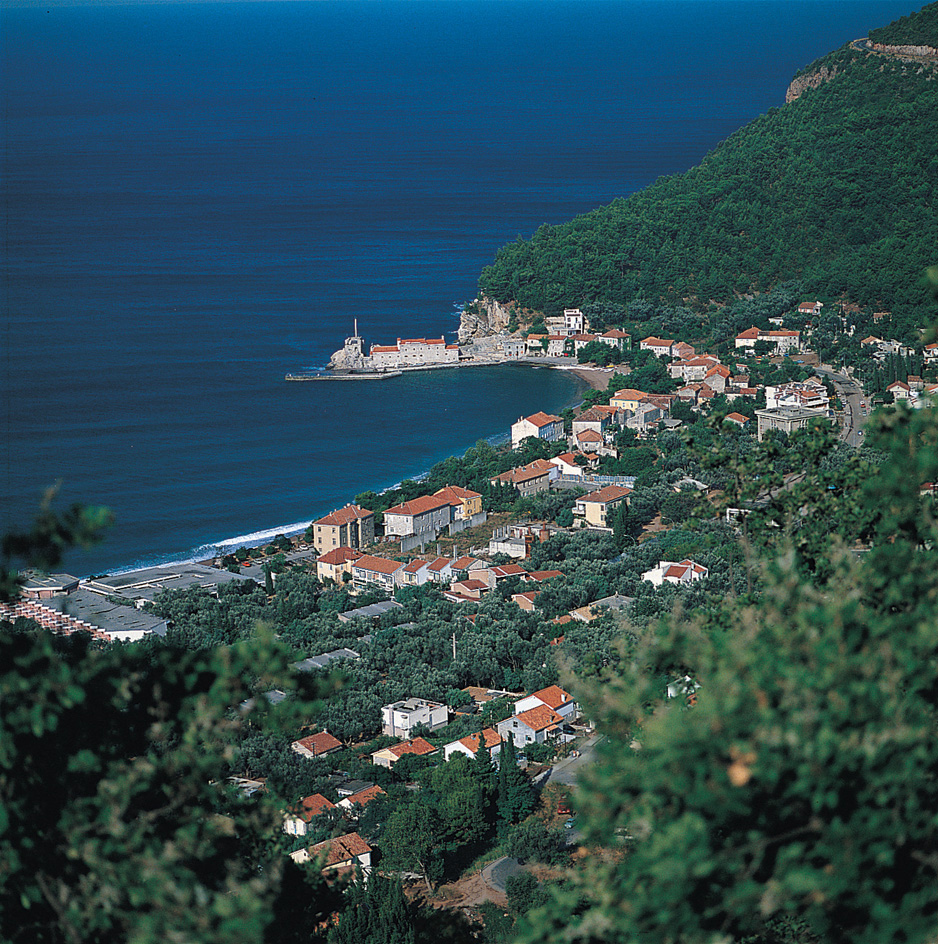
Tourism is a major source of income for Montenegro. Many vacationers come to Montenegro’s coast to enjoy the warm climate and scenic beaches. The historic coastal towns of Budva and Kotor are popular with tourists. Montenegro has international airports in Podgorica and Tivat. Bar has a major seaport.
History.
Present-day Montenegro became part of the Roman Empire in about 11 B.C. Slavs settled in the region in the 600’s. It became part of Serbia in the late 1100’s. The Ottoman Empire, based in modern-day Turkey, defeated the Serbs in the Battle of Kosovo Polje in 1389. Local nobles ruled Montenegro on behalf of the Ottomans until 1516, when Serbian Orthodox bishops of the monastery at Cetinje began to rule part of it. By the late 1700’s, the bishops’ rule extended to all of Montenegro. In 1852, Montenegro’s ruler took the title of prince, and the position of bishop became a separate office.
In 1878, the Congress of Berlin, a meeting of European leaders, formally recognized Montenegro as independent. The congress granted new lands to Montenegro, about doubling its size (see Berlin, Congress of). Prince Nicholas took the throne in 1860 and declared himself king in 1910. 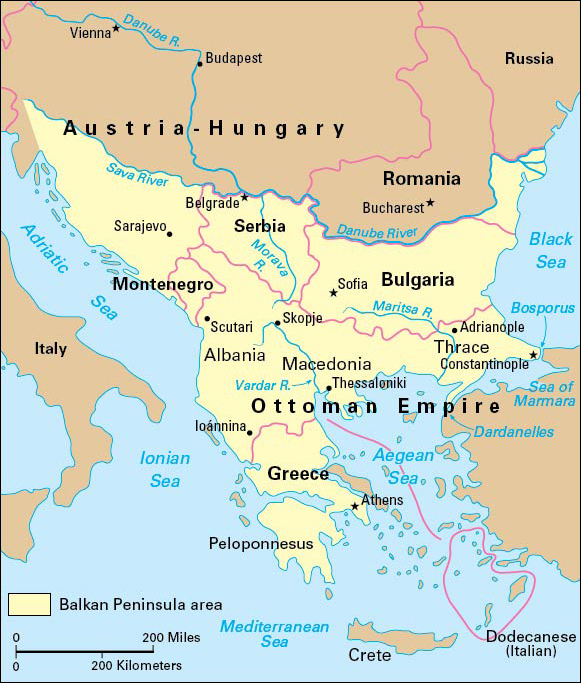
In the early 1900’s, a movement to unite Serbs and other Slavic peoples gathered strength in the region. Montenegro helped drive the Ottomans out of the Balkan Peninsula in the First Balkan War (1912-1913). Montenegro also aided Serbia in World War I (1914-1918). In 1918, townspeople deposed the king, and Montenegro became part of the new Kingdom of the Serbs, Croats, and Slovenes. But rural villagers organized militias to resist incorporation into the kingdom. Their resistance continued until the mid-1920’s.
During World War II (1939-1945), Italian and then German troops occupied parts of Montenegro. A resistance movement led by a group of Communists called Partisans fought the Italian and German troops. By 1945, the Communists had gained control of all of Yugoslavia. Yugoslavia’s 1946 Constitution officially organized Yugoslavia as a federal state—that is, a state where each of six republics, including Montenegro, largely controlled its own affairs. 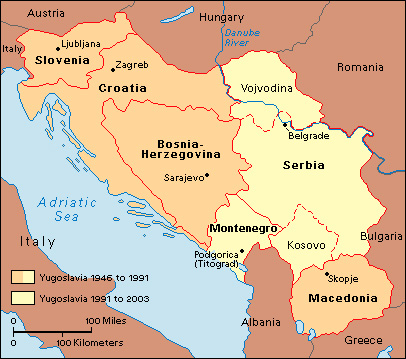
In 1990, Montenegro held its first multiparty elections. Between June 1991 and March 1992, four Yugoslav republics—Croatia, Slovenia, Macedonia (later to be renamed North Macedonia), and Bosnia-Herzegovina—declared their independence. In April 1992, Serbia and Montenegro formed a new Yugoslavia.
In 2000, many people in Montenegro began pressing for independence from Serbia, which held most of the power in Yugoslavia. In response, the leaders of the two republics announced plans in 2002 to create a new constitution and to rename the country Serbia and Montenegro. In 2003, the plans were approved, and Yugoslavia adopted the new name.
Many people in Montenegro continued to call for independence from Serbia. Montenegro’s legislative assembly ordered a referendum on independence, which was held on May 21, 2006. In the referendum, 55.5 percent of those who voted approved independence. Slightly more than 86 percent of Montenegro’s eligible voters went to the polls. Shortly after the referendum, Montenegro declared its independence. Serbia then declared its own independence.
Montenegro held its first parliamentary election as an independent country in September 2006. The Democratic Party of Socialists, which had governed Montenegro since 1991, remained in control of the government. Montenegro became a member nation of the North Atlantic Treaty Organization (NATO) in 2017.
The Democratic Party of Socialists held control of Montenegro’s government until the 2020 elections, when a coalition of three minority parties joined to form a majority in the legislature. Coalition members pledged to fight corruption and organized crime. Montenegrins also faced the question of whether to join the European Union (EU). The coalition collapsed in February 2022, after a parliamentary vote of no-confidence. Another coalition formed in April, but it collapsed in August following another no-confidence vote. In June 2023 elections, Europe Now, a centrist and pro-EU party, won the most seats in the legislature.
See also Djukanovic, Milo; Podgorica; Serbia; Yugoslavia.
